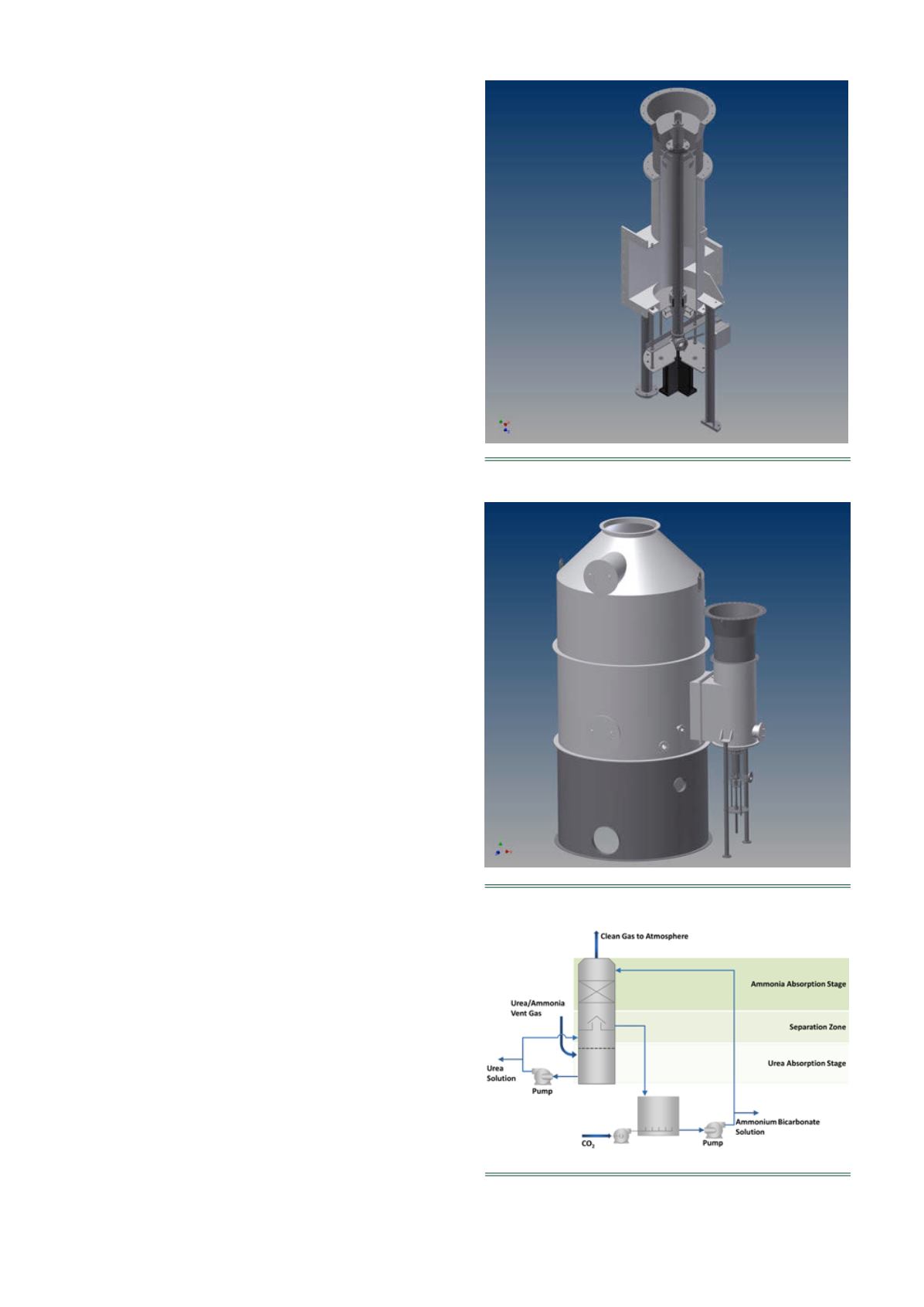
NOVEMBER 2016
| WORLD FERTILIZER |
87
Similarly plant water or a dilute waste liquid stream can
be used as makeup water, which will convert a wastewater
stream to a usable concentrated urea solution.
Venturi scrubber
The Macrotek annular throat venturi scrubber (model MVA) is
designed for applications requiring high removal of
sub-micron particulate (Figure 5). Water is introduced onto an
annular disc through a central pipe, which also acts as the
disc support (Figures 6 and 7). The supply pipe and water
distribution cap have large openings, which allows the
distribution of recycled water with minimal possibility of
plugging. Water flows outward on the disk to the annular
throat, creating consistent water curtain and optimum
shearing and turbulent action to maximise urea capture. At
the throat, the relative velocity difference between the gas
and water is highest. The water is sheared into tiny droplets
that collect entrained particulate by impaction. Water
droplets are agglomerated and collected by the downstream
high-efficiency mist eliminator in the separator vessel
(Figure 8). The chevron offers maximum droplet removal at
minimal pressure drop and maximum resistance to build-up.
An automated mist eliminator wash system is incorporated
into the design to clean the mist eliminator periodically in
order to prevent build-up and an increase in pressure drop.
Process control
Optimum pressure drop is maintained at the throat section
by raising or lowering the annular disk to increase or decrease
the gap at the throat section. Adjustment of the throat gap
control can be manual or automatic.
Vertical movement of the disc in the converging throat
provides a means for varying the area of the annulus over a
very large range. This allows flexibility and capacity to adjust
for varying flow conditions. Furthermore, increasing the
pressure drop will also increase the removal efficiency and
the removal of smaller particulate.
Combined urea-ammonia removal and
product recovery
Many applications and emission sources, such as granulators,
require removal of both urea and ammonia. A combined
approach is desirable for these applications. This
custom-designed, fit-for-purpose approach will allow the
waste byproduct to be used as the reagent while recovering a
usable byproduct. For these applications, a two-stage process
is implemented. The first stage includes urea removal by
either a plate-tray scrubber or venturi scrubber and the
second stage includes ammonia removal and ammonium salt
generation. Both stages recover valuable byproduct.
In addition, dilute waste liquid streams can be
incorporated to increase concentration and convert these
waste liquid steams to usable solutions.
Case studies
Combined urea and ammonia removal using waste
CO
2
as neutralising reagent
A large multi-national fertilizer plant in the Caribbean was
mandated to reduce urea and ammonia emissions from its
granulator exhaust. The original installation included a
Figure 9.
Combined urea-ammonia removal and product
recovery with CO
2
.
Figure 8.
Model of MVA and separator vessel.
Figure 7.
Cut-out of MVA.


